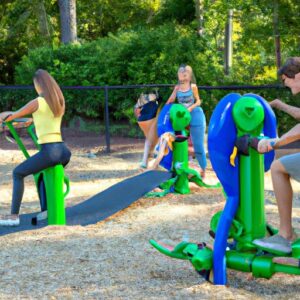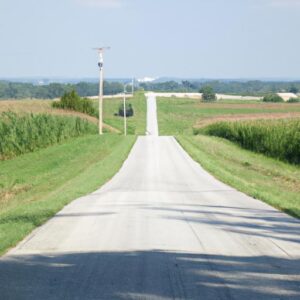As a gardener, you know how crucial it is to provide the best conditions for your plants to thrive. From choosing the right sunlight exposure to watering them adequately, every aspect requires careful consideration. One vital factor that often gets overlooked is the soil. Soil composition plays a significant role in the growth and health of your plants, including grass. In this article, we will explore the importance of selecting the right soil for grass and answer the question: Can gardening soil be used for grass?
Importance of Choosing the Right Soil for Grass Growth
Grass, like any other plant, requires specific conditions to flourish. The soil provides essential nutrients, oxygen, and water retention capabilities necessary for healthy grass growth. Using the wrong soil composition can hinder its development, leading to weak, patchy, or even dying grass. Therefore, understanding the ideal soil composition for grass is crucial to ensure a lush and vibrant lawn.
Brief Overview of the Topic: Can Gardening Soil Be Used for Grass?
Now that we understand the significance of soil composition for grass growth, let’s delve into the topic at hand. Gardening soil, commonly used for potted plants and flower beds, may seem like a convenient option for grass. However, it is essential to recognize the differences between gardening soil and the specific soil requirements of grass.
Stay tuned as we explore these distinctions and shed light on whether gardening soil can be used effectively for growing grass. Join me in the next section as we uncover the unique characteristics of gardening soil and the specific soil requirements for grass growth.
Understanding the Ideal Soil Composition for Grass
To ensure the optimal growth of your grass, it is crucial to understand the ideal soil composition. Let’s explore the key factors influencing grass growth, the components of an ideal soil for grass, and the importance of proper soil composition for healthy grass.
A. Key Factors Influencing Grass Growth
Several factors play a significant role in the growth and development of grass. These include:
-
Nutrient Availability: Grass requires essential nutrients like nitrogen, phosphorus, and potassium for healthy growth. The soil composition should provide an adequate supply of these nutrients to support grass development.
-
Water Drainage: Proper water drainage is vital for grass health. Excess water can lead to root rot, while insufficient drainage can cause waterlogging and suffocate the roots. The soil should have good drainage capabilities to prevent these issues.
-
pH Level: Grass thrives in a specific pH range, typically between 6 and 7.5. Maintaining the appropriate pH level ensures optimal nutrient absorption and overall grass health.
B. Components of an Ideal Soil for Grass
An ideal soil composition for grass consists of the following components:
-
Loam: Loam soil, a balanced combination of sand, silt, and clay, provides optimal conditions for grass growth. It offers good drainage, water retention, and nutrient availability, making it ideal for most grass types.
-
Organic Matter: Incorporating organic matter, such as compost or well-rotted manure, improves soil structure, water-holding capacity, and nutrient availability. It also enhances microbial activity in the soil, promoting healthier grass growth.
-
Aeration: Grass roots require oxygen for respiration. A well-aerated soil, with sufficient air pockets, allows roots to access oxygen easily, promoting robust growth.
C. Importance of Proper Soil Composition for Healthy Grass
Choosing the right soil composition for grass is paramount for its overall health and vigor. Proper soil composition ensures adequate nutrient availability, water drainage, and oxygen supply to the roots. This, in turn, leads to robust root development, lush green foliage, and increased resistance to diseases and pests.
In the next section, we will discuss the differences between gardening soil and the specific soil requirements for grass growth. Join me as we explore whether gardening soil can be effectively used for growing grass.
Differences between Gardening Soil and Grass Soil Requirements
Distinct Characteristics of Gardening Soil
Gardening soil, typically used in pots and flower beds, is formulated to provide optimal conditions for a wide range of plants. It is often rich in organic matter, such as compost and peat moss, which enhance moisture retention and nutrient availability. Additionally, gardening soil tends to have a looser texture, allowing for better drainage and root development.
Specific Soil Requirements for Grass Growth
On the other hand, grass has its specific soil requirements that differ from gardening soil. Grass prefers a well-drained soil that retains enough moisture for root hydration while preventing waterlogging. Unlike gardening soil, grass soil should have a finer texture to provide a stable base for the roots and allow them to penetrate the soil easily.
Furthermore, grass soil requires a balanced nutrient composition, including nitrogen, phosphorus, and potassium, to support healthy growth. These nutrients are vital for foliage development, root strength, and overall plant resilience. Grass soil also benefits from a slightly acidic to neutral pH range, typically between 6 and 7, to facilitate nutrient uptake.
Potential Problems When Using Gardening Soil for Grass
While gardening soil may seem like a convenient option, using it for grass can lead to several problems. The looser texture of gardening soil can impede proper root establishment, making it difficult for grass to anchor itself firmly. This can result in shallow root systems, causing the grass to become more susceptible to drought stress and damage.
Moreover, the higher organic matter content in gardening soil may lead to excessive nitrogen levels, which can overstimulate foliage growth at the expense of root development. This imbalance can result in weak grass that is prone to diseases and pests. Additionally, the pH of gardening soil may not be ideal for grass, affecting nutrient availability and uptake.
In the next section, we will explore whether gardening soil can be used for grass and weigh the pros and cons of this approach. Stick around to make an informed decision about the best soil choice for your grass.
Can Gardening Soil Be Used for Grass?
If you’re considering using gardening soil for your grass, it’s essential to weigh the pros and cons before making a decision. Let’s take a closer look at using gardening soil for grass and explore the factors you should consider.
A. Overview of Using Gardening Soil for Grass
Using gardening soil for grass may seem like a convenient option, especially if you already have some on hand. However, it’s important to understand that gardening soil is specifically formulated for potted plants and flower beds, which have different requirements than grass.
Gardening soil is typically rich in organic matter, providing nutrients and moisture retention ideal for container plants. Grass, on the other hand, requires a well-draining soil that allows room for root development and proper airflow. Using gardening soil for grass may result in poor drainage, leading to waterlogged roots and potential mold or disease issues.
B. Pros and Cons of Using Gardening Soil for Grass
-
Pros:
- Convenience: If you already have gardening soil available, using it for your grass can save time and money.
- Nutrient-rich: Gardening soil is typically packed with organic matter, which can provide some initial nutrients for the grass.
-
Cons:
- Drainage Issues: Gardening soil tends to retain moisture, which can lead to poor drainage and root rot in grass.
- Soil Compaction: The organic matter in gardening soil can break down over time, leading to soil compaction and restricted root growth.
- pH Imbalance: Gardening soil may have a different pH level than what grass requires, which can affect nutrient availability.
C. Factors to Consider Before Using Gardening Soil for Grass
Before using gardening soil for your grass, consider the following factors:
-
Soil Composition: Evaluate the texture, drainage, and nutrient content of the gardening soil to determine if it aligns with the needs of grass.
-
Grass Type: Different grass species have varying soil requirements. Research the specific soil conditions preferred by your grass type.
-
Amendments: If you choose to use gardening soil, consider adding amendments like sand or compost to improve drainage and adjust the pH level.
-
Long-term Effects: Consider the long-term implications of using gardening soil for your grass. Will it impede the grass’s growth in the future?
In the next section, we will explore alternative soil options that are better suited for grass, providing you with a variety of choices to ensure optimal growth.
Alternatives to Gardening Soil for Grass
Different Types of Soil Suitable for Grass
When it comes to growing grass, there are alternative soil options that can provide the ideal conditions for its growth. Let’s explore some of these alternatives:
1. Topsoil
Topsoil is the uppermost layer of soil, typically rich in organic matter and nutrients. It is an excellent choice for establishing a new lawn or repairing bare patches. Topsoil provides a fertile environment for grass to take root and thrive.
2. Sandy Soil
Sandy soil is well-draining and allows water to permeate easily. It is a suitable option for areas with heavy rainfall or excessive moisture retention. However, sandy soil may require additional amendments to enhance its nutrient content and water-holding capacity.
3. Loamy Soil
Loamy soil is considered the gold standard for growing grass. It possesses an ideal balance of sand, silt, and clay, providing excellent drainage and moisture retention. Loamy soil is naturally fertile and promotes healthy root development, making it a top choice for a lush and vibrant lawn.
Benefits and Drawbacks of Using Alternative Soil Options
While alternative soil options offer their own advantages, it is essential to weigh the benefits against the drawbacks. Let’s explore both sides:
Benefits
- Improved soil structure and drainage capabilities
- Enhanced nutrient availability for optimal grass growth
- Increased water retention, reducing the need for frequent irrigation
- Suitable pH levels for grass root uptake
Drawbacks
- Additional costs involved in purchasing and transporting alternative soil
- Potential need for soil amendments to optimize nutrient content and pH levels
- Time and effort required for proper soil preparation and incorporation
Steps to Prepare and Utilize Alternative Soil for Grass Growth
To ensure successful utilization of alternative soil for grass growth, follow these steps:
- Clear the area: Remove any existing grass, weeds, or debris from the designated lawn area.
- Soil testing: Conduct a soil test to determine any deficiencies or imbalances in the alternative soil.
- Soil amendments: Based on the soil test results, incorporate necessary amendments, such as organic matter or fertilizers, to optimize the soil’s nutrient content.
- Soil preparation: Till the alternative soil into the existing soil to ensure a thorough mix and proper distribution.
- Leveling and compacting: Smooth out the soil surface and lightly compact it to provide a stable base for grass seed or sod installation.
- Grass installation: Sow grass seed or lay sod according to the recommended guidelines for the specific grass variety.
By following these steps, you can effectively utilize alternative soil options to establish a healthy and vibrant grass-covered lawn.
Conclusion
After a thorough examination of the topic, it is clear that using gardening soil for grass may not yield the desired results. While gardening soil is designed for plants in containers or flower beds, grass has specific soil requirements that differ from traditional gardening soil.
Grass requires a well-draining soil with the right balance of nutrients, moisture retention, and proper aeration. Using gardening soil, which may have different composition and properties, can lead to issues such as poor drainage, nutrient deficiencies, or compacted soil. These factors can result in weak, patchy, or even dying grass.
To ensure the optimal growth and health of your grass, it is recommended to utilize soil specifically formulated for grass. Alternative soil options, such as loam or sandy soil, can provide the ideal conditions for your lawn. Prepare the soil by removing any debris or rocks and incorporate organic matter to enhance its fertility.
Remember, the foundation of a vibrant and lush lawn lies in the soil. By choosing the right soil and providing proper care, you can create a beautiful and resilient grassy landscape.
In conclusion, while gardening soil may be suitable for other plants, it is not the best choice for grass. Invest in the right soil and provide your grass with the ideal conditions it needs to thrive. Your efforts will be rewarded with a vibrant, healthy, and envy-inducing lawn.
So, can you use gardening soil for grass? The answer is clear: it’s best to opt for soil specifically designed for grass to ensure optimal growth and a stunning lawn. Happy gardening!





